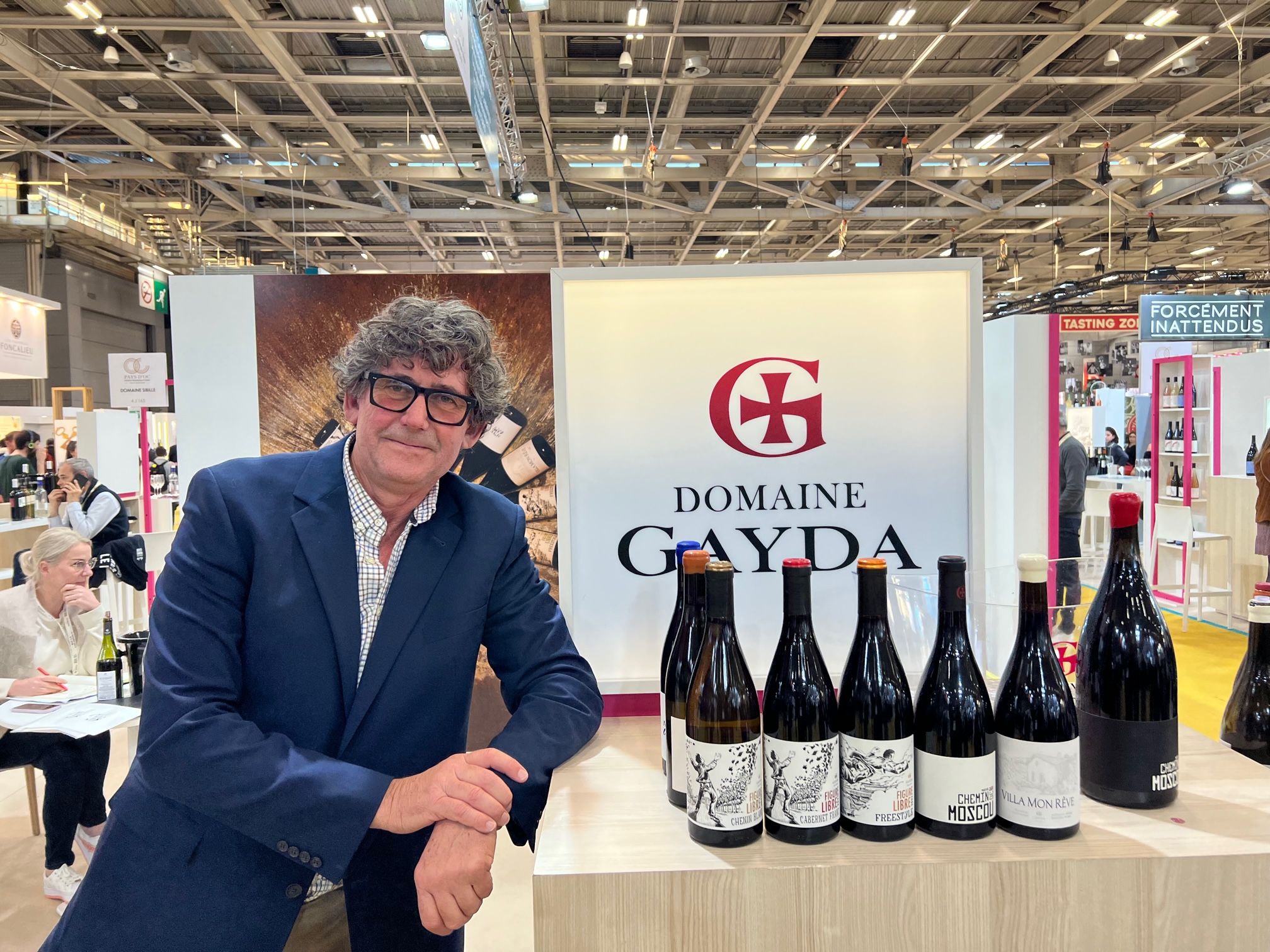Villa Mon Reve, Chemin de Moscou,Altre Cami, Figure Libre, La Minuette, En Passant, Collection, T’air D’Oc, Flying Soloare all brands that have helped make Domaine Gayda a “go to” producer for wine merchants and restaurants all over France and an increasing number of markets around the world with close ties to a growing network of regional importers in the UK.
Considering the number of things you have to get right and contend with in any 12 months of making wine it is quite the milestone to be able to look back on 20 years of back to back vintages and a business that is now making 1.2 million bottles a year and is selling its wine successfully in over 40 countries around the world.
It’s two decades that have flown by for Tim Ford who appears as excited and as passionate about Domaine Gayda, and what lies ahead, as he has been during any of the previous 20 years.
He is, though, in a reflective mood as he embarks on what will be Domaine Gayda’s 20th vintage this year. Happy to take the time to look back and pick out the key milestones that have helped Domaine Gayda get to where it is today. As well as touch on the some of the more difficult moments too.
The Inspiration

The dream that came true for all those involved in the last 20 years of Domaine Gayda
So what was it that brought this Englishman, his wife Barbara and his family,to a remote part of the Languedoc to start a wine business?
With things going wrong in Zimbabwe, where Timwas running a successful flower export company, he decided to gettogether with Anthony Record MBE and formulated a plan to start a winery in the Languedoc.
Both having Africa in their blood it was a perfect match, Record having a holiday home in the area, was also a base to get started.
“We spent three months trying to buy a winery and could not find anywhere that was suitable. In the end we came across what has become Domaine Gayda 500m from Anthony’s holiday home. We had decided to go for a picnic and sat under a tree to get some shade,” recalls Ford.
The tree just happened to be the “l’arbre de Moscou” which used to be one of the main navigation beacons to help guide the pioneering ‘Aeropostale’ pilots of the air postal service that started in 1918 flying between Toulouse and Barcelona.
“It was sitting under that tree looking at the beautiful views all around us where the inspiration came from,” he says. Let’s build our own, let’s start from scratch and design it the way we want.”
Hence the name of their flagship brand – Chemin de Moscou – that has become synonymous with Domaine Gayda from year one. For not only is Chemin de Moscou named after the “Nom Cadastral” (land registry name) of the vineyards around the winery in the village of Brugairolles, the road leading up to these vineyards is actually called “Chemin de Moscou”.
Vineyards and Winemaking strategy
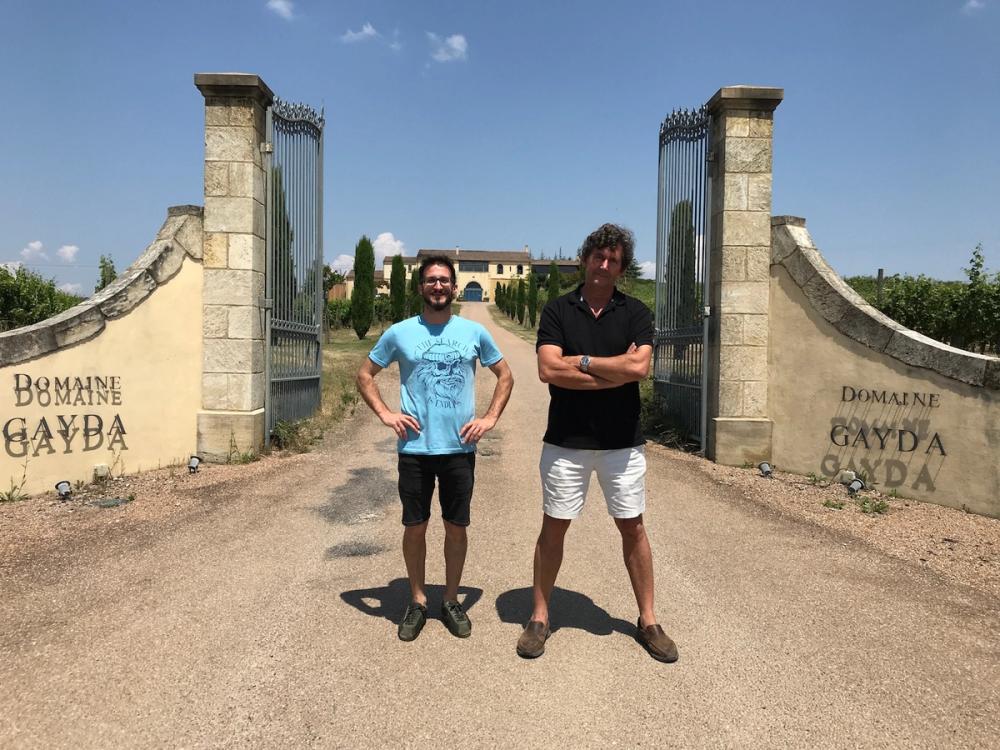
Tim Ford and winemaker partner Vincent Chansault are 100% focused on making IGP that are a true to the Languedoc terroir where they come from
Ford says their winemaking principles from the start was to make IGP wines that could be a blend of the best terroir and varietals they could find and purchase in the surrounding Languedoc area. On the home farm all the vines were planted over a fiveyear period and planting still continues. As it does in all of the four main areas where it has vines, situated across four distinct terroir areas giving Ford and his winemaking team – headed up by Vincent Chansault who has also been part of the business from the beginning – the ingredients to make the blends they believe are the best of what IGP wines can offer.
The main vineyards are: La Liviniere, a strong limestone area (mainly Syrah, Grenache, Cinsault, Mourvèdre, Carignan (Rouge) andViognier; Col de la Dona, which is mainly schist (Syrah and a little Grenache); Latour de France that offers up Gneiss (metamorphic rock), where it takes Carignan, Syrah and Grenache; and Domaine Gayda , the home farm, with its sandstonesoils where it grows Syrah, Cabernet Franc, Chenin Blanc, Sauvignon and Viognier.
“You have got so many terroirs to draw on that are within an hour or two of where we based the winery,” explains Ford.
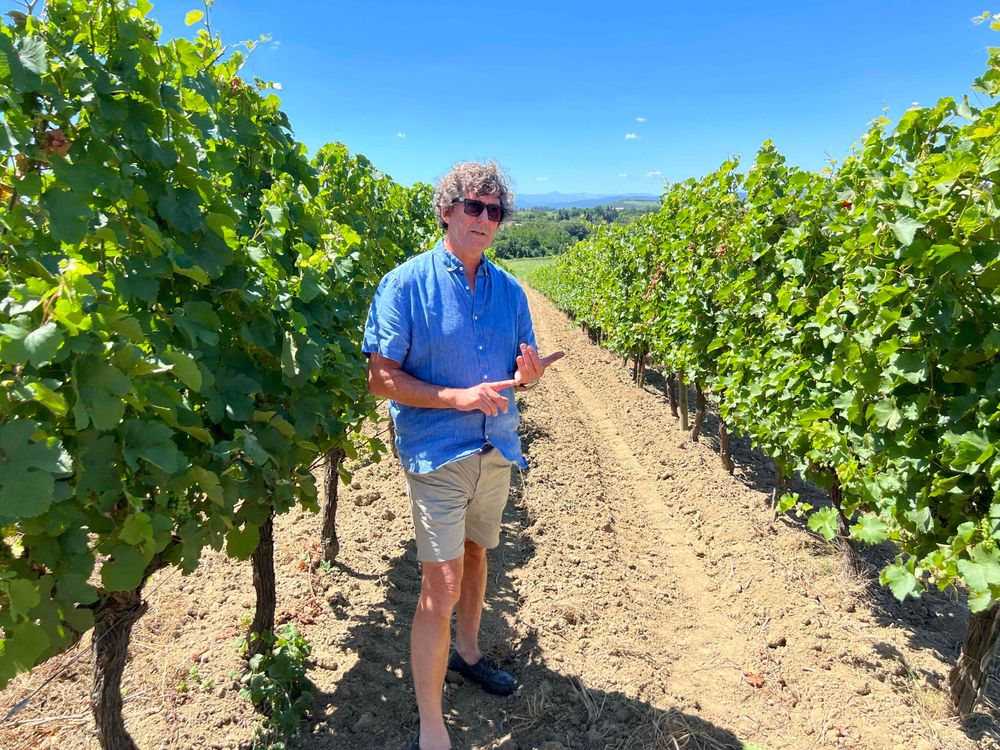
Tim Ford and his team have worked to find the best terroir areas for the various Domaine Gayda wines
On top of their own vineyards, Domaine Gayda takes a selection of grape varieties from various long term partners throughout the Languedoc to complete the basket of grape varieties and terroirs.
Key Breakthrough: Chemin de Moscou
There’s no doubt Domaine Gaya would not have made the impact it has had without its Chemin de Moscou brand .
“Chemin de Moscou has clearly been the most important thing that has happened to us,” says Ford. “That’s been our key breakthrough and has become one of the few iconic brands from the Languedoc and has really helped to drive our other brands.”
It has, though, been a long process and it has only been in the last few years that it has seen a big momentum swing from being a nice to have brand, to a must have for 100s of customers in France, which accounts for 75% of its sales.

Chemin de Moscou has become the foundation on which the Domaine Gayda business has been built
It now is sold toover 2,000 restaurant and wine shops up and down the country. Domaine Gayda’s stand at Wine Paris & Vinexpo Paris had a constant flow of cavistes and restaurateurs coming to taste and chat.
Even President Macron lists the wine at the Élysée Palace, claims Ford, and is often served at state dinners.
“We have broken through that barrier and now people are telling us they need to have the brand. We have reached that iconic status with Chemin de Moscou. You can now have two wine shopsside by side to each other both selling Chemin de Moscou in the same way they would other established brands such as Bollinger or Cloudy Bay for example.”
Ford is particularly proud that Chemin de Moscou has gone on to truly “exemplify what IGP wineriesare all about”. The blend is made up from it’s top organic vineyards made up of Syrah (around 60%), Grenache (35%) and Cinsault (around 5%).
“The style stays the roughly the same and 70% to 80% of grapes come from the same vineyards each vintage , but each year the make up of the blend will be slightly different,” he says. “Chansaultis constantly working on improvements and tweaking the wine every year just trying to get the very best result with no compromises.”
He adds: “Over the years you learn what each terroir can do. But it means we can end up with 600 barrels, with 600 different samples, which over a two-day period Chansault will go through blind to make up the blend for the year’s Chemin de Moscou.”
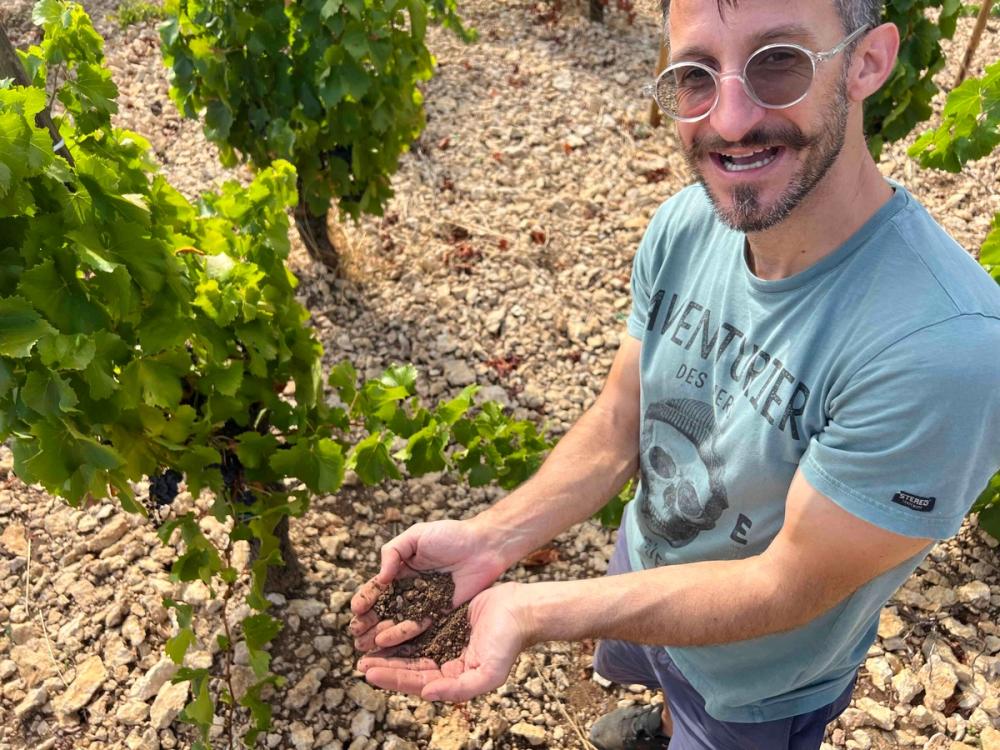
Winemaker Vincent Chansant will carefully blend Chemin de Moscou together out of 600 barrels
Perhaps the most striking fact about Chemin de Moscou is that the labelling, design and font remains exactly the same today as when it was first introduced, proving how timeless its Communist poster propaganda-style imagery is.
Brand strategy
A key factor in Domaine Gayda’s 20-year success has been in how it has been able to build up a portfolio of sub-brands that have developed very clear identities of their own.
“A branded strategy that also fits with the viticultural approach we take,” explains Ford. It’s why each of its brands are “connected in some way”.
The key, he adds, is to create a style for that particular wine or label, like Chemin de Moscou. Each wine has to remain true to its character with a variance based on the vintage.
This is where the influence of leading South African winemaker, Mark Kent,the driving force behind Boekenhoutskloof and its iconic brand, Chocolate Block, as advisor to Domaine Gayda from the beginning has been so important to how its branding strategy has developed.
“We have learnt so much from Mark over the years and I would like to think we are following in his footsteps to some degree,” says Ford.
He adds: “We have created a range of wines that people know the brands more than they do the winery. But that is the same with Mark in South Africa where people know Chocolate Block and Porcupine Ridge more than they know the winery Boekenhoutskloof.”
Tight management team
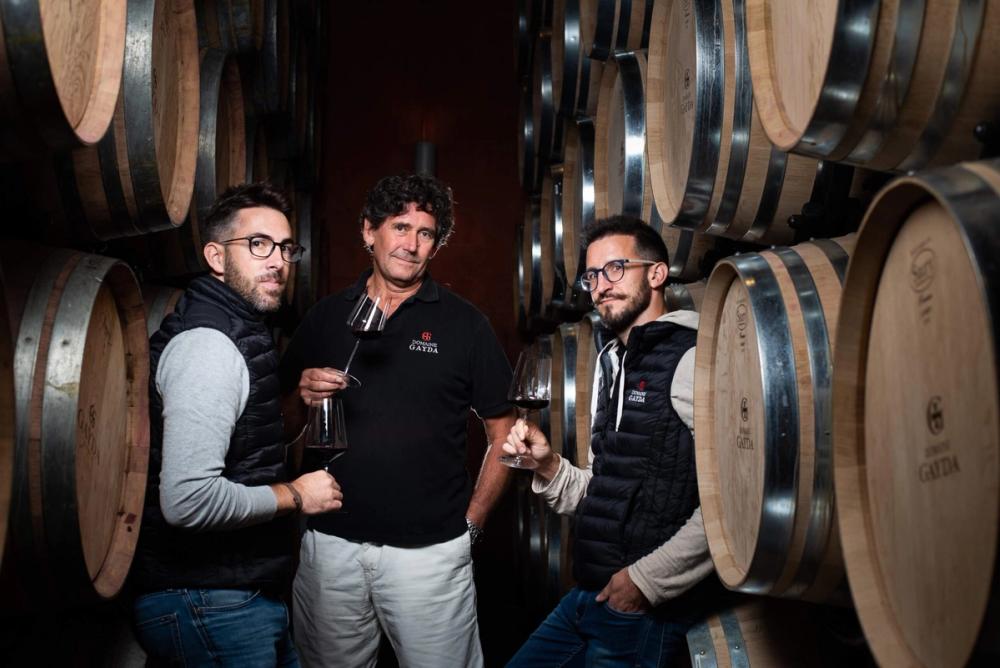
The Domaine Gayda team: Tim Ford centre, with David Chardron commercial manager left and winemaker Vincent Chansault right
Another factor in Domaine Gayda’s longevity, stresses Ford, is the tightly run management team with just three people calling the shots: himself; winemaker Vincent Chansault; and commercial manager, David Chardron, who trained at the same viticulture and oenology school in the Loire as Chansault. Anthony Record sits as chairman and casts his experienced eye over alldecisions as the “wise owl,” says Ford.
“We know a camel is a horse designed by a committee and the more people you have involved the more you are going to have a business that looks like a camel than a fine bred horse. The three of us are a good balance and we cover winemaking, commercial and brandingbetween us.”
It means all the winemaking, branding, marketing and commercial decisions can be made quickly. Maybe not always correct but a decision is made.
Biggest Challenges
Ford says one of the biggest challenges Domaine Gayda has faced, which is true for many Languedoc producers, is communicating just whatIGP wines are all about. The misconception, he says, is that IGP indicates a lower quality of wine, whereas it actually just denotes where a wine has been grown and made. The quality is up to the wine makers and vineyards.
“IGP has had an identity crisis,” claims Ford. “Tying to get people to understand the benefits of IGP, not the limitations,has been a big challenge over the years. It is not an inferior product. Our grapes could just as easily been produced on AOP land but as we do not vinify in the same village we get instead an IGP status. Also, we might not want to blend with the percentages prescribed by the AOP so we have the IGP status.”
Which, again, is why it has followed such a strong branded strategy. It has become Domaine Gayda’s way of standing out in such a vast area with so many wines fighting for identity.
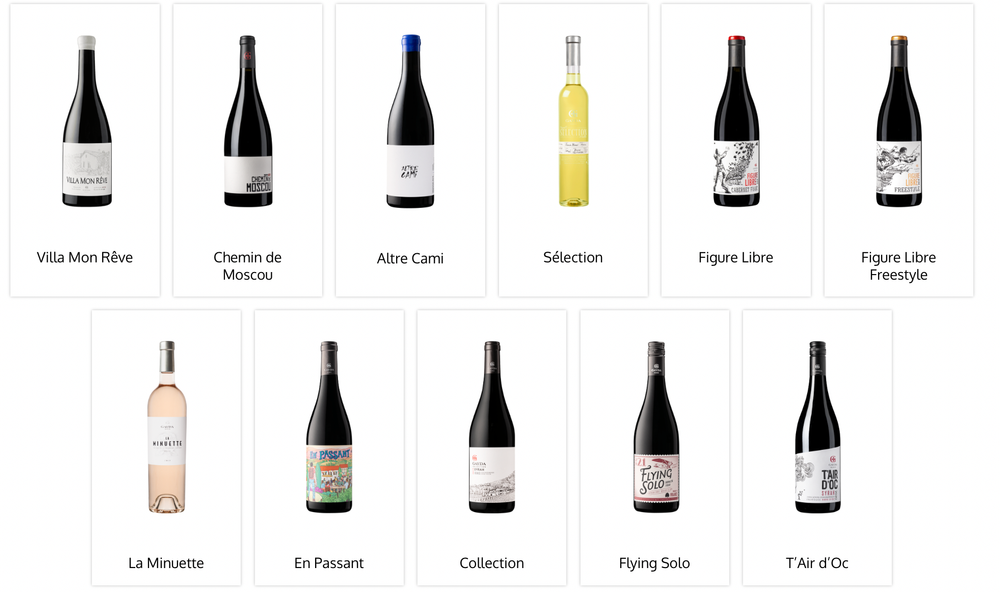
Domaine Gayda has worked hard to build up a branded portfolio that helps tell the story of the land and terroir from where its grapes come from
“It is how we stick our heads above the parapet, we are proud of our approach. We have learnt just how important brands are. That is also how you can prove you are consistent every year. By creating brands with real substance. Uncompromising vineyard management and winemaking, year in, year out, quality, quality then more quality … then you have your brand. Then you hope it has not cost too much where a profit is not possible.”
He adds: “It’s not rocket science, but so few people get that.”
To achieve that meansnot just having motivated staff, colleagues and workers butmorehaving a family who are all critical contributors to theDomaineand feel they are an important part of the success and appreciated for their part, be it logistics, pruning accounts or marketing. .
“We want everyone to feel part of Domaine Gayda and what we do. From our social media, to our website, to the receptionist, to our production, if you have one weak link the chain breaks. As a manager it is myjob to identify where those weak links are and strengthen them.”
Biggest lessons

On to bigger and better things: Tim Ford in the new winery and cellar space that is being built at Domaine Gayda
Ford says if he knew how challenging the whole process of running a winery was going to be, it’s likely that picnic under the Chemin de Moscou tree might have turned out very differently.
“It’s been scary at times asthe ‘back of a fag packet’ budget we started with has been blown many times over, as time has gone on our budgeting and financial control has become quite slick as the business has moved from a ‘start up’ to a serious enterprise. But looking back I have no regrets. The journey has been fantastic. I would not have done anything differently either. All our errors and mistakes have helped create what we have today. What does not kill you makes you stronger. Here’s to another 20 years.”
Domaine Gayda’s Other Key Brands
Villa Mon Rêve
First introduced: 2012
Price point: £48

The Villa Mon Rêve is the name of a little stone cottage situated on Domaine Gayda’s vineyards in La Livinière. The cottage was built by the previous owner for what he thought was his dying wife so that they could spend valuable last moments together in the heart of the vineyard. But thankfully his wife made a miraculous recovery and hence the cottage became knowns as the “Villa Mon Rêve” – the house of my dream.
“It took us 10 years to find the right vineyards for this wine,” says Ford of a wine that is around 90% Syrah and aged in large foudres and hopes to compete as a high end Syrah.
Figure Libre CabernetFranc and Chenin Blanc
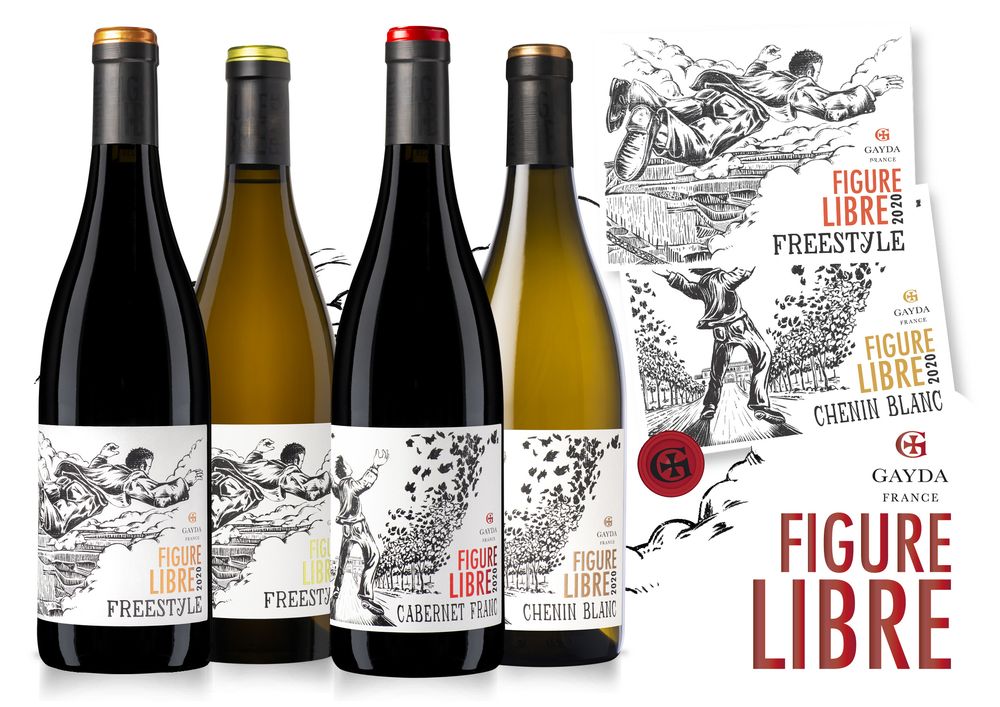
First introduced: 2005
Price: £16.99
A celebration of two grape varieties not usually associated with the Languedoc – Cabernet Franc and Chenin Blanc – that are well suited to Domaine Gayda’s sandstone terroir and are also a nod to the Loire and the home of winemaker, Vincent Chinsault.
Figure Libre, Freestyle Red and White
First introduced: 2005
Price: £14.99.
“We have no restraints with this wine. No safety net that an appellation wine gives you. We are freestyling and have been able to be creative” says Ford. “With Freestyle we can really express the blending of different terroirs and grapes throughout ourLanguedoc vineyards.”
Here the red and white blendscome from ablanding the classic grape varieties of the Languedoc, such as Syrah, Grenache and Carignan for the red and Macabeu, Marsanne and Grenache Blanc for the white.
La Minuette

First introduced: 2017
Price point: Around £11.99.
This blended rosé comes from the limestone terroir of the land Domaine Gayda owns in La Livinière that helps give it great freshness and notes of grapefruit. This is a serious, premium style of rosé that includes many of Domaine Gayda’s top classification grapes, including Mourvedre, Syrah, Grenache and Cinsault.
En Passant
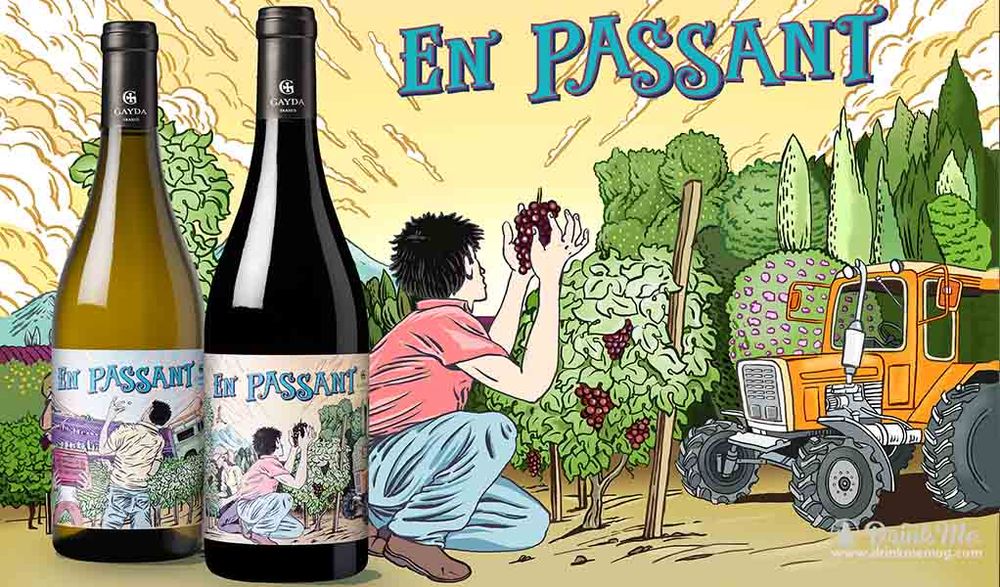
First introduced: 2014
Price point: £11.99
En Passant lives up to its name for this is a brand made up of grapes that are “in passing” on their way to becoming organic or have made it as the red has. It both allows Domaine Gayda to increase the number of its vines that are organic whilst developing a successful brand at the same time. It means the blend has beenchangingvintage to vintage, with different labels and designs introduced every year that tell the story of that particular wine with a storyboard design.
Ford says it “reflects what we do as a winery” and taps into its “creativity and inventiveness”.
Collection
Price point: £9.99
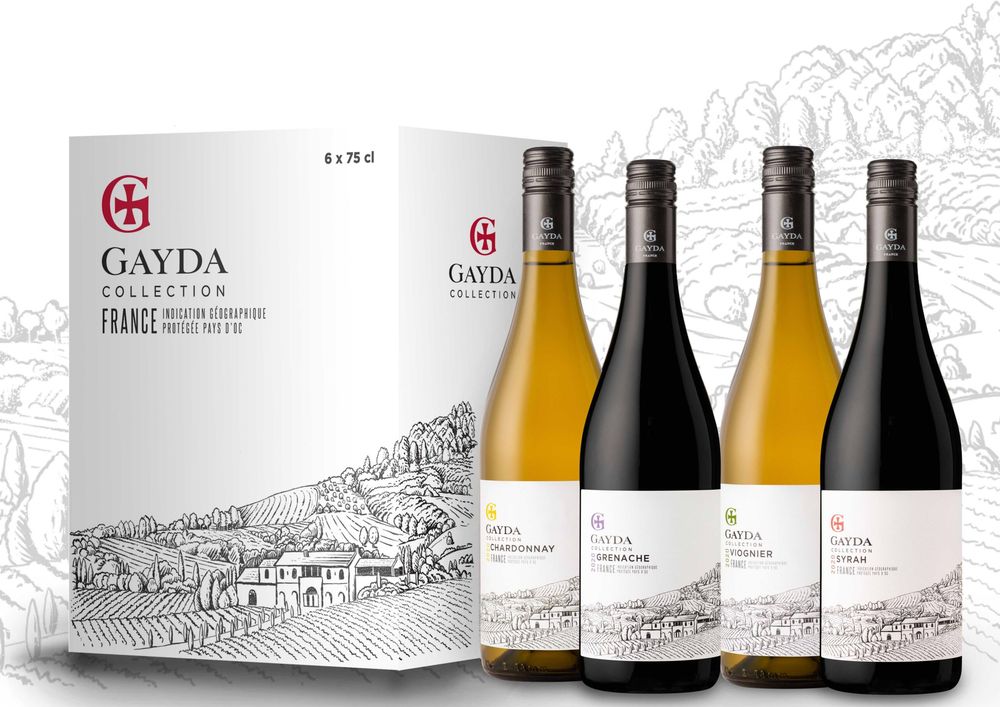
The Collection range is Domaine Gayda’s single varietal range which is again looking to reflect and showcase the diversity of the region and how well certain varieties perform there.
“We want the Collection wines to be a true representation of what Chardonnay, Viognier, Syrah and Grenache can do here,” says Ford.
Flying Solo
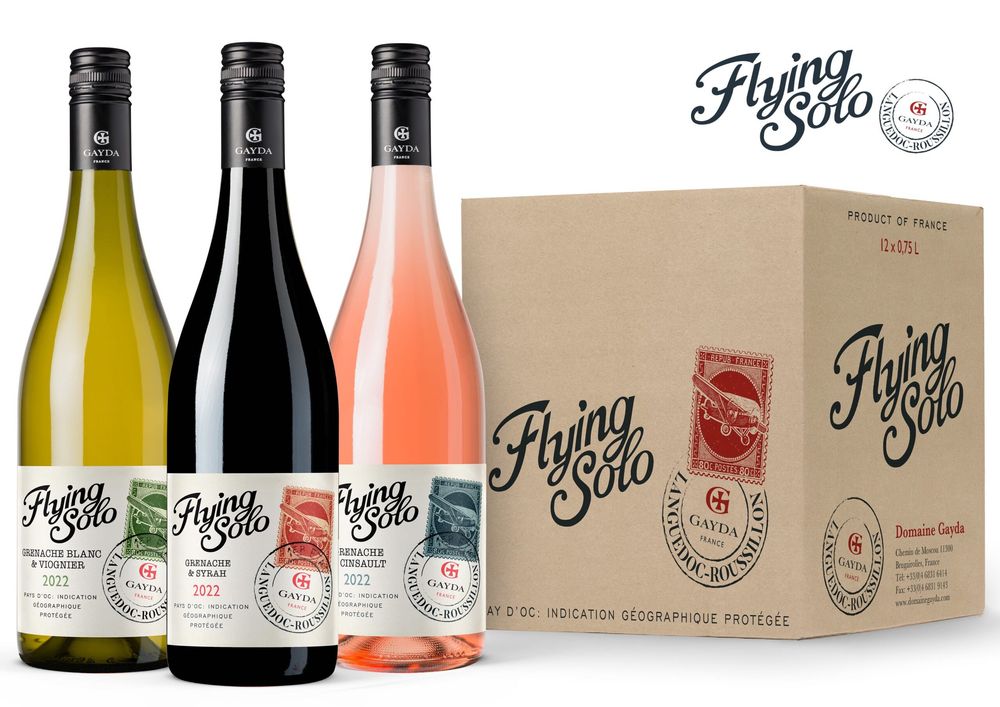
First introduced: 2011
Price: £ 8.99
Domaine Gayda’s link to the “Aeropostale” system is represented by its Flying Solo brand, that has just gone through a label design. It includes three wines, a Grenache Syrah blend, a white Grenache Blanc, Viognier blend and Grenache Cinsault rosé blend.
Altre Cami
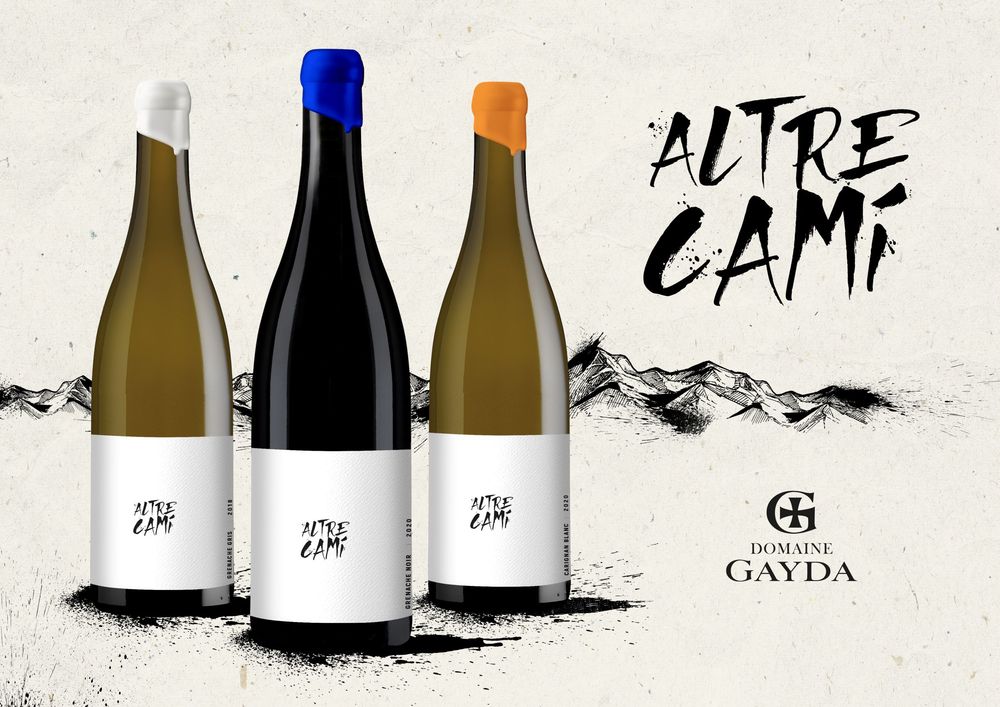
First introduced: November 2021
Price Point: €25
This brand features two styles – Grenache Noir and Macabeu – that come from Domaine Gayda’s Catalan vineyards and was introduced to reflect “another path…another vision” for the winery. “It was born out born out of the desire to elevate our beautiful vineyards of the Roussillon and to celebrate the Catalan heritage of the terroirs,” says Ford.
- To find out more about Domaine Gayda go to its website here.
- You can taste its full range of wines at ProWein in Hall 10, Stand 10C101.
- Domaine Gayda is a producer partner of The Buyer.
